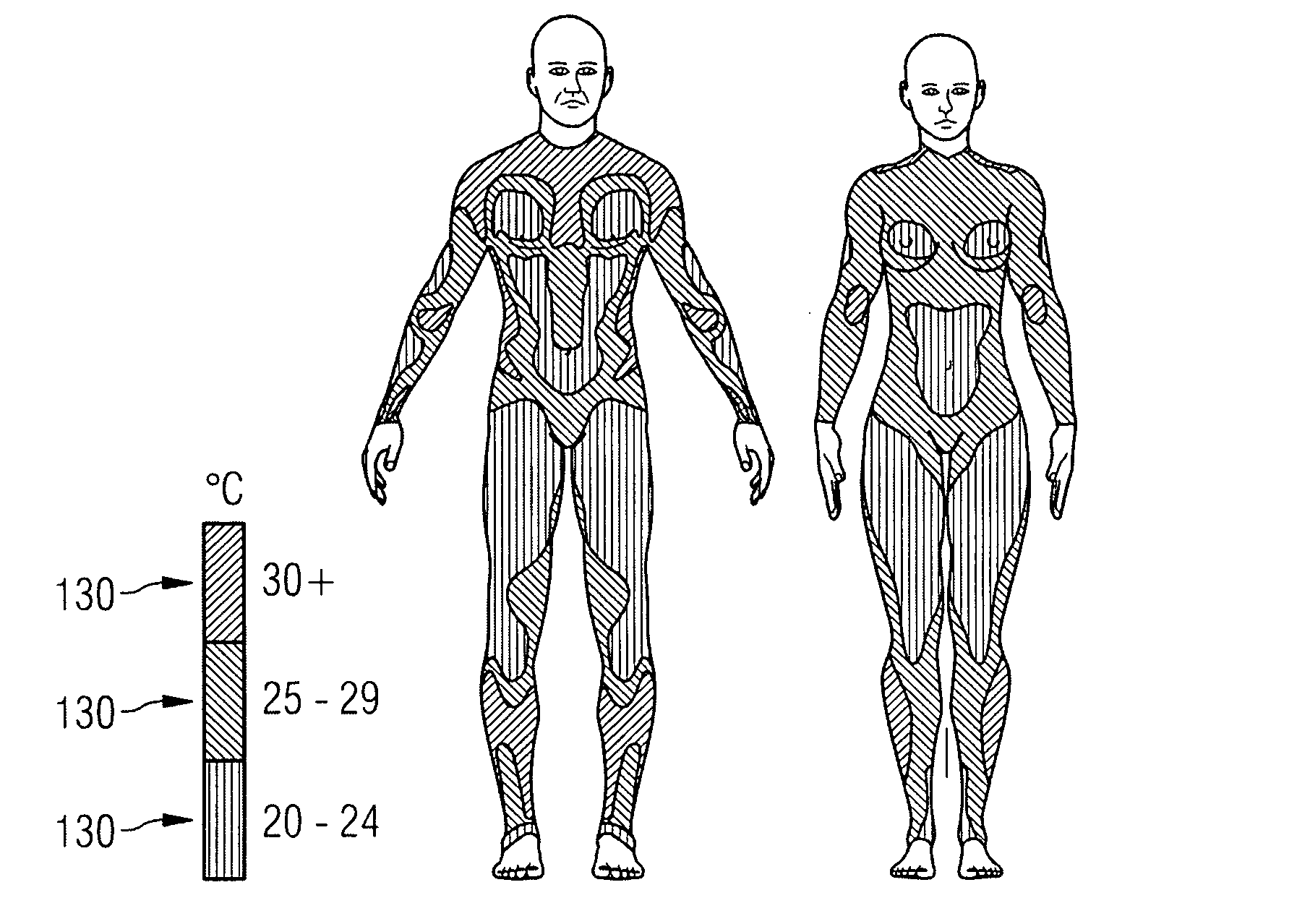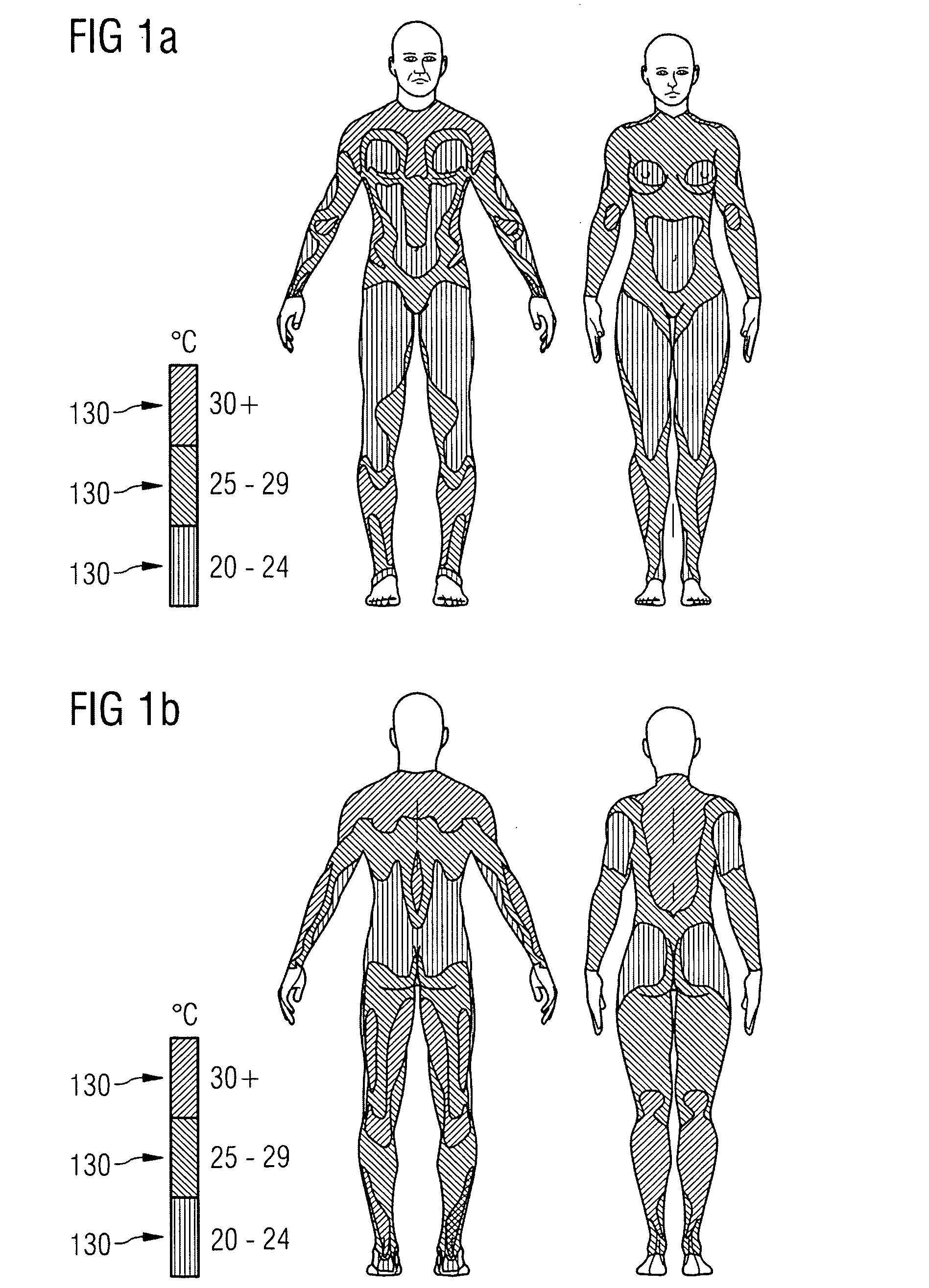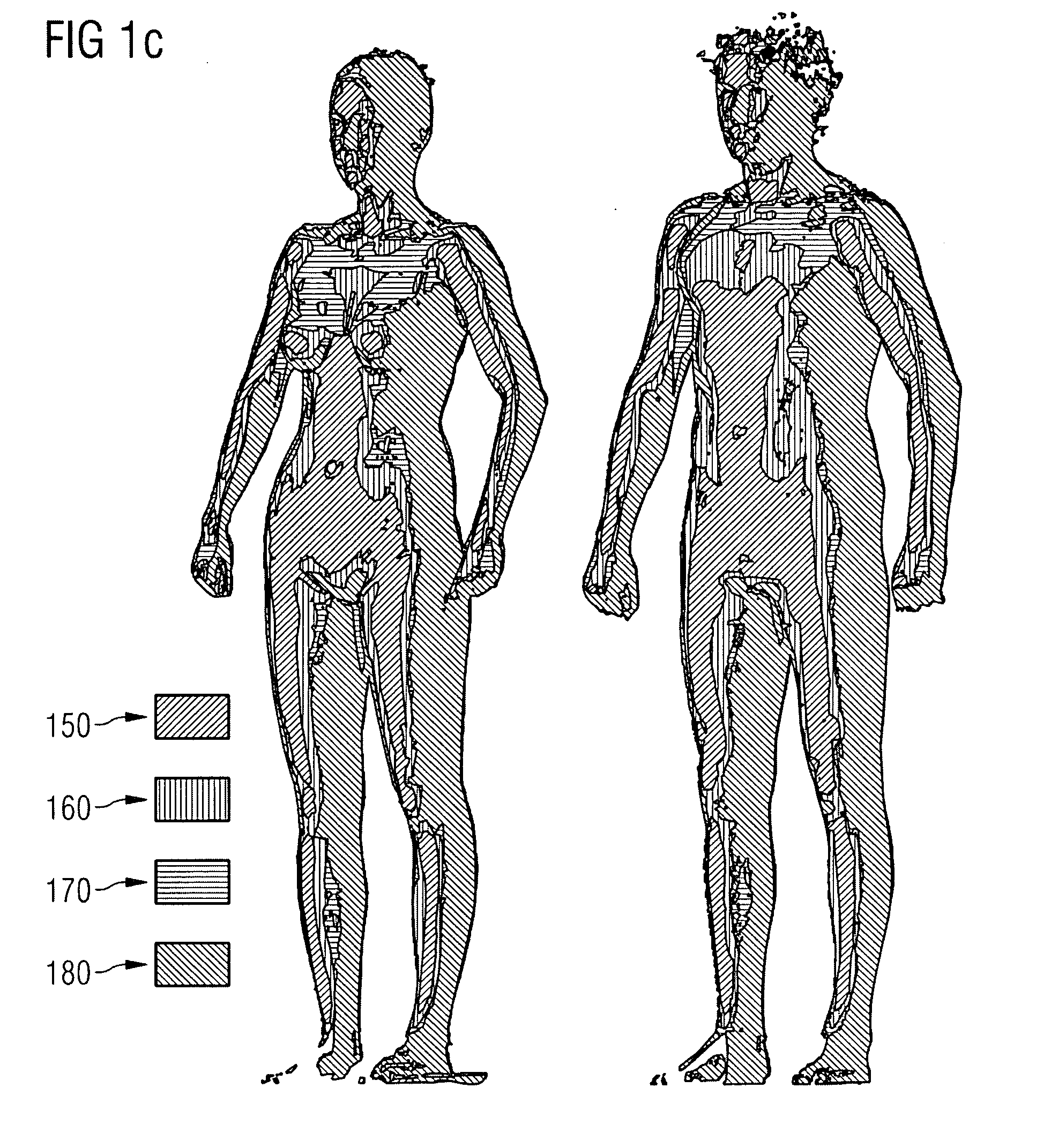[0016]This problem is solved in that the second zone comprises a higher degree of
moisture wicking than the first zone. The increased
moisture wicking of the material of the second zone facilitates the transport of sweat from the inside of the material, i.e. the side directed to the skin, to the outside of the material where the sweat can evaporate. A higher degree of air permeability or ventilation in this second zone (as in the first zone) without removal of the sweat would lead to an accumulation of sweat and to an unpleasant wet
sensation. Therefore, only the combination of the two zones and their particular arrangement according to this embodiment of the invention enables a garment with a significantly improved thermal regulation.
[0019]This embodiment of the invention may fulfill the requirements of a garment both for men and for women and for each season. As in the preceding first aspect, the garment comprises a first zone with a higher degree of air permeability and a second zone with a higher degree of moisture wicking than the other zones. However, there are areas on the front side of the body which are subject to a high wind pressure (see, e.g., FIG. 1c) and which have a lower
skin temperature and a lower sweat production than the other zones. In contrast with the first and the second zone, these areas have to be protected from over cooling, wherein no additional ventilation is desirable due to the lower sweat production. The problem of an improved thermal regulation of the third zone can therefore be solved by a higher degree of wind protection than in the first and the second zone. A garment according to this embodiment may be advantageous in situations in which cool air or wind may cause an over cooling of the mentioned areas of the body, for example during running on a cool
morning or when wind blows.
[0021]Another embodiment of the present invention relates to a garment which comprises at least a first, a second and a fourth zone, respectively comprising a higher degree of air permeability and moisture wicking and a
lower degree of
thermal resistance than the other zones. In contrast with the garment according to the preceding embodiment of the present invention which includes wind protection, this embodiment of the invention comprises the conduction of heat by a material with a lower
thermal resistance in those areas of the body which have a high
skin temperature but low sweat production. Such a garment may therefore be advantageous in situations which require a comprehensive cooling of the body, for example during warm weather. In a preferred embodiment for men the fourth zone is arranged laterally at the
torso and in the
elbow area. In a preferred embodiment for women the fourth zone is arranged in the shoulder area and in the
elbow area and / or on the front sides and the back sides of the lower legs.
[0026]In an embodiment, a garment may further include a sixth zone having at least one entry vent. This enables to introduce air into the garment which provides an additional removal of heat and wetness. This improves the
evaporation of sweat and therefore causes cooling of the body. Preferably, the at least one vent is arranged between the shoulder area and the breast area and / or laterally at the
torso, since in these locations the air circulates best around the body. The air which enters the garment may not only hit a surface but can circulate along the shoulder respectively and along the
torso. This supports the supply of air to the first zone which requires a higher degree of air permeability. Preferably, the at least one entry vent can be partially closed.
[0028]In one embodiment, the second zone comprises a material which transports moisture due to its
capillary action. In this way, thermal regulation of areas with high sweat production and low
skin temperature can be effectively achieved. The
capillary action can be affected by the material construction and / or
yarn properties of the material of the second zone. The
capillary action can also be affected by a
chemical treatment of the material of the second zone.
[0029]In one embodiment, the third zone comprises a material with
high density, a laminated material, a coated material including a material with a liquid
coating, and / or material
layers connected with glue points. This increases the degree of wind protection of the third zone.
 Login to View More
Login to View More  Login to View More
Login to View More 


